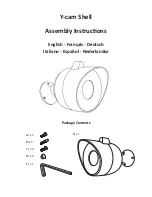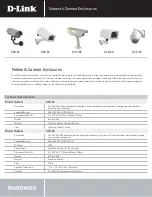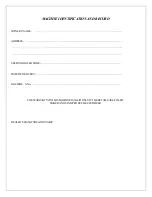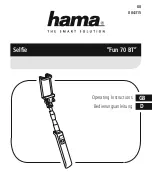
Before uncrating, check the quantity of items received against bill
of lading
to confirm that all material has been received. Examine the
condition of the equipment to determine if any damage has occurred.
It is possible that some items may become separated from the
original shipment.
Therefore, when receiving goods, it is imperative that
the bill of lading (or, accompanying freight documentation) be checked to
ensure receipt of ALL units ordered including ALL accessories.
Damage and/or shortage in shipment should be reported immedi-
ately to both vendor and carrier.
Obtain a signed
damage report from carrier agent and send copy to vendor.
Do not repair any damage before obtaining this report.
For damaged shipments, consult factory
to determine if entire ship-
ment must be returned to factory for repair
or
if an immediate order
should enter production to produce a new, replacement shipment.
Note: Do not return goods to factory without prior, written return
authorization. Unauthorized returns are subject to refusal at factory.
RECEIVING AND INSPECTION
SHORTAGES, DAMAGES AND RETURN AUTHORIZATIONS
UNCRATING AND STORAGE
Carefully remove crating and look for essential components and
specific accessories that may have been boxed and attached (or
‘banded’) to crating material.
Safety pop out rollers, guard rails and
hardware are often packaged and shipped in this manner. Save all
hardware for subsequent use by installation personnel.
The drive section will be shipped mounted to its actual operat-
ing bed section
(see illustration above). Intermediate bed sections are
shipped mounted on top of drive bed section with formed steel stiffener
(spacer) brackets.
In illustration to the left, a model 700SB is shown palletized
with
belting and return rollers for all bed sections mounted to top of crate
which is prepared for shipment.
Some items (electric motors, gearbox, etc.) may be shipped direct
from their manufacturer to final destination
. Thus,
the conveyor may consist of two or more separate shipments.
Belting must be housed in dry quarters.
Do not store belt on edge
(see illustration below).
Never Store belt placed directly on floor.
Elevate to prevent contact
with floor moisture.
4
SAFETY POPOUT ROLLER STANDARD
Always leave popout roller (see illustration at left) in place when
permanently attaching any gravity conveyor to power conveyor.
Never connect powered belt conveyors directly to gravity convey-
ors without using the pop out roller.
Never connect power belt conveyors to any other conveyor or equip-
ment with out the safety popout roller in place as shown at left.
Содержание 450BOS
Страница 1: ...Installing and Maintaining Your Roach Conveyor...
Страница 17: ...MODEL 725TB END DRIVE END side mount DRIVE center drive drawings 17...
Страница 26: ...MODEL 796RB END DRIVE END side mount DRIVE center drive drawings 26...
Страница 29: ...MODEL 751RB END DRIVE END side mount DRIVE center drive drawings 29...





































